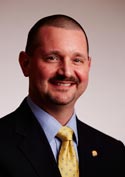
Thomas S. Roukis, DPM, PhD, FACFAS
ACFAS President
Every profession has its dogma, a set of beliefs that a group holds to be true. But I’ve been known to challenge dogma—sometimes I’m right, sometimes I’m proven wrong.
Here’s an example: The impetus for me to intensely study hallux rigidus (HR) came from my chief resident, David Dawson, DPM, FACFAS, when he told me during my first month of residency, “I love HR surgery because no matter what procedure you choose, patients do well.”
I wondered why, if this statement was true, would anyone perform a first metatarsal “decompression” osteotomy and alter the shape of the first metatarsal, the cost of internal fixation and a longer recovery compared with Cheilectomy alone? I wondered what the literature told us. So after hand-searching our library journals and textbooks (this was before powerful Internet search engines), I was disappointed because the etiologies proposed were as numerous as the surgical approaches proposed. Surely any pathology that had myriad possible causes, and even more surgical approaches, was anything but a proverbial “slam-dunk” for the patient and surgeon.
Dr. Dawson’s innocent statement morphed into a prospective study of 50 feet defining the clinical, radiographic and intra-operative articular surface mapping HR. The second study of this patient population was a shortterm, one-year follow-up that demonstrated mproved function and subjective patient outcomes, but not range of motion following Cheilectomy alone for early to mid-stage hallux rigidus and similar results for late-stage HR treated by metallic hemi-implant or silicone total implant arthroplasty. In contrast, decompression osteotomies resulted in worse function, subjective patient outcomes and iatrogenic problems such as forefoot callusing, lesser toe deformities and the need for in-shoe orthotic devices to reduce metatarsalgia. This negative effect occurred regardless of HR grade.
We are currently compiling the data for the IRB-approved, 15-year follow-up of the original prospective study mentioned above, with more than 85 percent of the patients returning for evaluation. This is an unprecedented long-term follow-up study and should help to answer some of the questions raised by the short-term follow-up data.
It is too early to share the results, but I am hopeful that I will have to eat my words about first metatarsal decompression osteotomies and that Dr. Dawson’s dogmatic statement will be realized as fact. Time will tell us the truth and in short order. However, regardless of the results, the most important thing to me is that the dogmatic statement was challenged and studied under the rigors of science.
As ACFAS members, we should all continue to further our skill sets using all of the College’s resources. However, by challenging “podiatric dogma” with the rigors of science, we can further our efforts to deliver evidence-based, effective and fiscally sound care that ultimately will improve our patients’ outcomes. The other option is to let other organizations do it for us and then follow their lead. Which would you prefer? Asking the hard question and seeking the answer, or following someone else’s lead and adhering to their guidelines?
